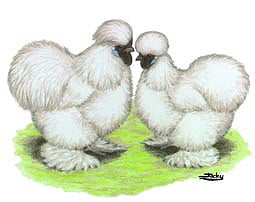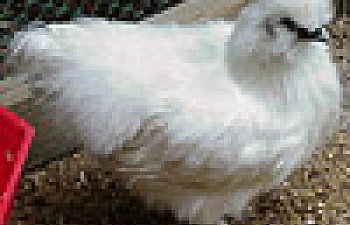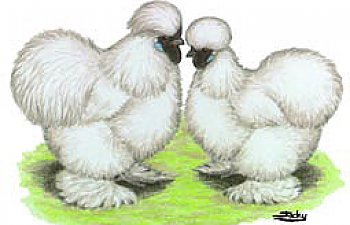
| 
| 
| ||||||||||||
| ||||||||||||||

| 
|

Silkies have walnut combs although I've seen single and pea combs on them. Walnut combs are the most desired and any other type would probably get the bird disqualified as a show bird. Silkies have many qualities that make them unique in the poultry world. Most notably their feathers lack webs making the feathers look like down or silkie fur. Their earlobes are a blue/turquoise color and they have black skin and bones. They have feathered legs, crests, bearded and non-bearded, and they have 5 toes. Silkies do not fly very well and wing clipping will probably not be needed. In the US silkies are seen as banties but they mostly are an intermediate size between large fowl and bantam. The UK and other countries list them as large fowl and banties.
Silkies are not the most hardy of birds and their lack of flying ability along with docile nature are more susceptible to predators. They make decent foragers and handle confinement quite well. Silkies do not like high roosts and prefer them no more then 4 feet off the ground. Given the choice of sleeping in a corner and roosting in a tree, silkies will take the corner. Silkies are friendly, quiet, tame birds that make great pets for just about everyone and have turned more then one person into a chicken lover.
-- Daniel M. Garcia
Quotes from http://www.cvm.umn.edu/avian/SFPC/TaiheBlackBoned.html
[ click any image to enlarge ]
Silkie Links:Hat Trick Silkie Hatchery
Surfing with Silkies (info site, lots of links)
Marti's Poulty
American Silkie Bantam Club
Silkie Creek Farm
Feathersite's Silkie Page (LOTS of links here)

















